A humane mouse trap is an inexpensive solution to a small furry pest problem. From time to time, you might come across the odd uninvited house guest in the shape of a mouse, looking for somewhere nice and cosy to stay the night. Or, if you have a cat that likes to bring you live presents, you could end up with a furry friend running around. It's never too early to prepare for rodents entering your house, but it can be difficult to know where to start - that's where the best humane mouse traps come in.
While they're sweet to look at (unlike spiders, which you'll also want to get rid of), mice can cause havoc in your home, nibbling through walls and boxes and potentially even causing issues with wiring or spreading diseases.
Many people opt for a live mouse catcher, which means the mouse can be released afterwards. According to PETA, glue traps, poison and other kill options can mean a rodent will suffer for days before eventually dying in agony, which nobody wants on their conscience. There are many different types of traps, some of which include: jaw mousetraps, spring-loaded bar mousetraps, electric mousetraps, live-capture mousetraps, glue mousetraps, bucket mousetraps and disposable mousetraps. Personally, we would recommend a more humane and natural one.
Wondering how to catch a mouse? Read on for our full guide on dealing with mice, as well as the best mouse traps you can use to trap your unwanted guests humanely. We've listed the best-selling non-kill humane mouse catchers and included our top tips on what to do before and after.
Best mouse traps at a glance
Best humane mouse traps
Best humane mouse trap multipack
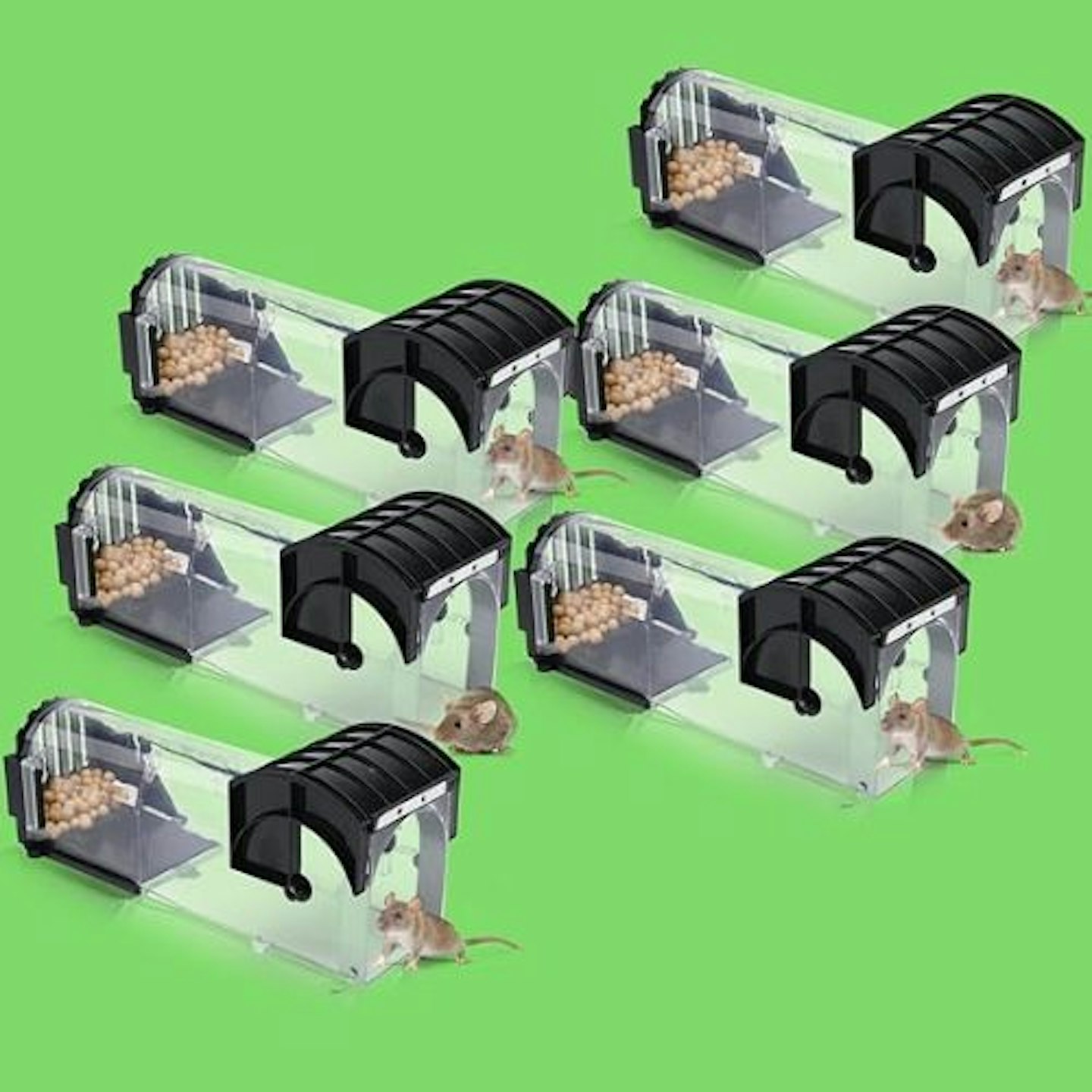
www.ebay.co.uk
This set of six human mouse traps offers great value for money. If you have a pest problem, this multipack of mouse traps could be a cost-effective and humane solution to removing uninvited critters. With a no-touch release, it's hygienic and also very easy to clean. Add some bait, such as nuts or peanut butter. Set the trap. Catch and release - simple.
Customers have found the sensitivity of these traps to be just right, allowing you to catch mice quickly while also reducing the chance of false triggers. Reviewers also appreciated the number of traps you get in a pack so you can scatter them around an area where you've noticed you've got a mice problem. Although many customers found them easy to use, some reviews felt the instructions could be easier to follow.
Pros
- Perfect sensitivity to catch mice quickly while reducing the chance of false triggers
- Value for money with six traps included for the price
Cons
- Instructions for set up could be easier, but once figured out, they are easy to use
Best for budgets
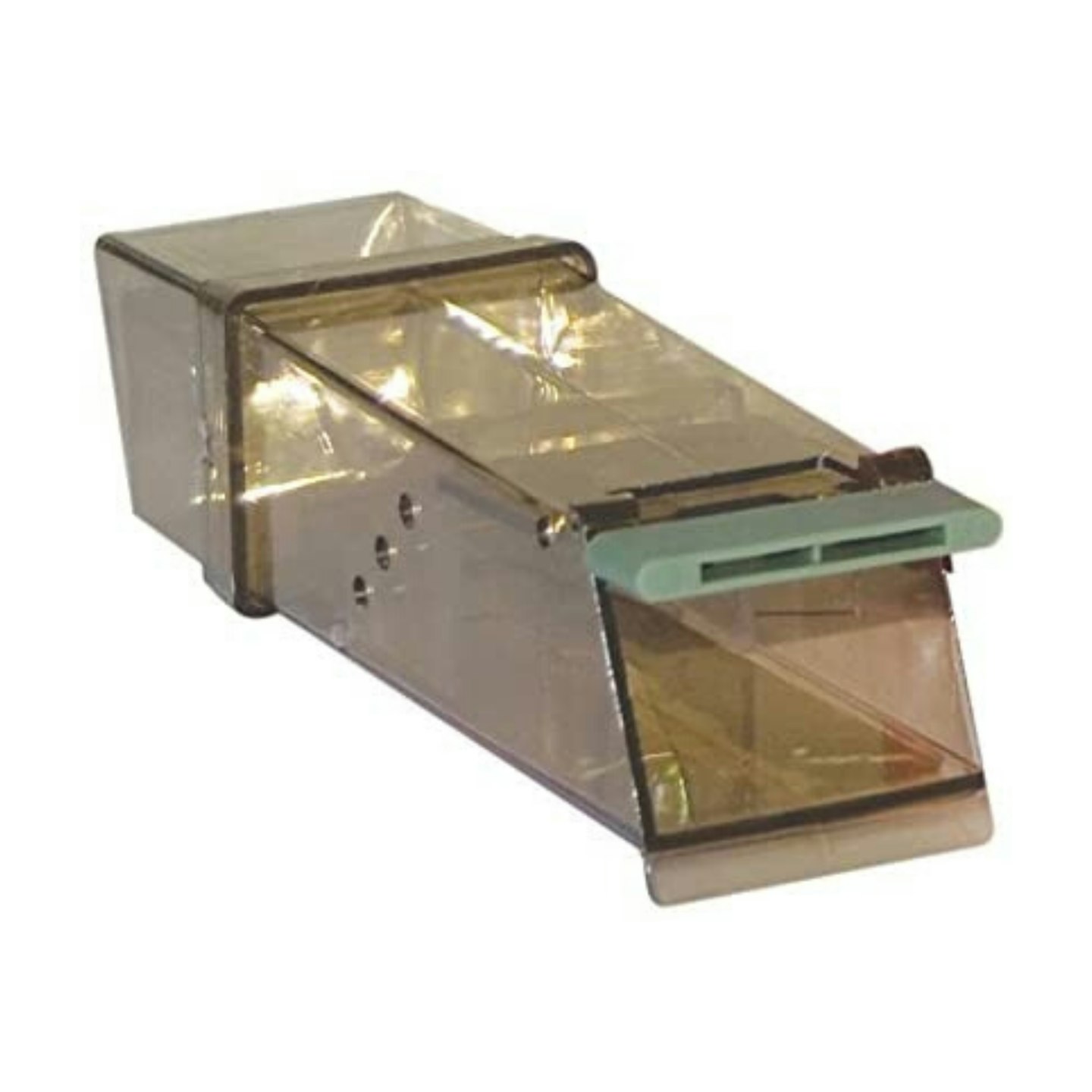 Pest-Stop/Amazon
Pest-Stop/AmazonThis budget Pest-Stop PSTTB Trip Trap Boxed option gets the job done but won't break the bank. It's easy to use but isn't as big as some of the others on the list. Load up the bait, wait for your mouse to enter the trap and safely be captured inside, then empty, ready to be cleaned and used again.
Customers are happy with the sensitivity of this trap and say it's really simple to use. Opinions are mixed on the overall quality of the trap, with some saying it seems a little flimsy, so it's not as robust as other options on this list.
Pros
- A good budget option
- Good sensitivity level
Cons
- Not as robust as others
Best value humane mouse trap
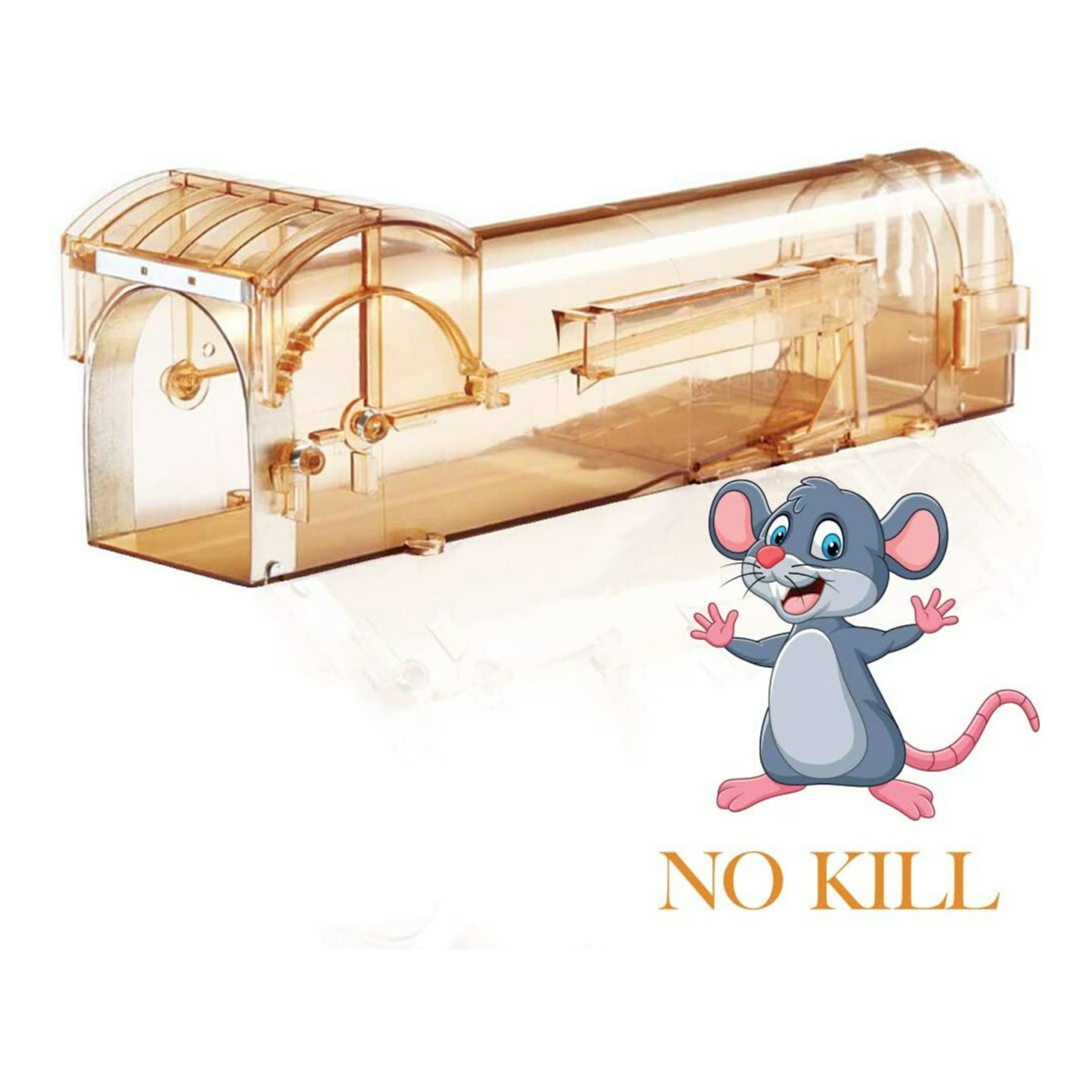 KEPLIN/Amazon
KEPLIN/AmazonA best-seller on Amazon due to its success rate, its simplicity of use and its price. It's also child and pet-friendly. Place a nut or other tempting treat inside the KEPLIN Humane Mouse Trap, and lock it once the mouse has been caught. The trap features a sensitive spring on a pedal, which triggers the door to close. The trap can be cleaned out after you have freed the mouse and used over and over again.
Customers found this trap worked a treat to capture mice and found it super simple to use. Some reviewers had issues with some mice being too small to trigger the capture mechanism, and because the traps are fairly small in size, some customers found them tricky to clean out.
Pros
- Easy to use
- Child and pet friendly
Cons
- Some mice are too small to trigger the trap
Best mouse trap for ease of use
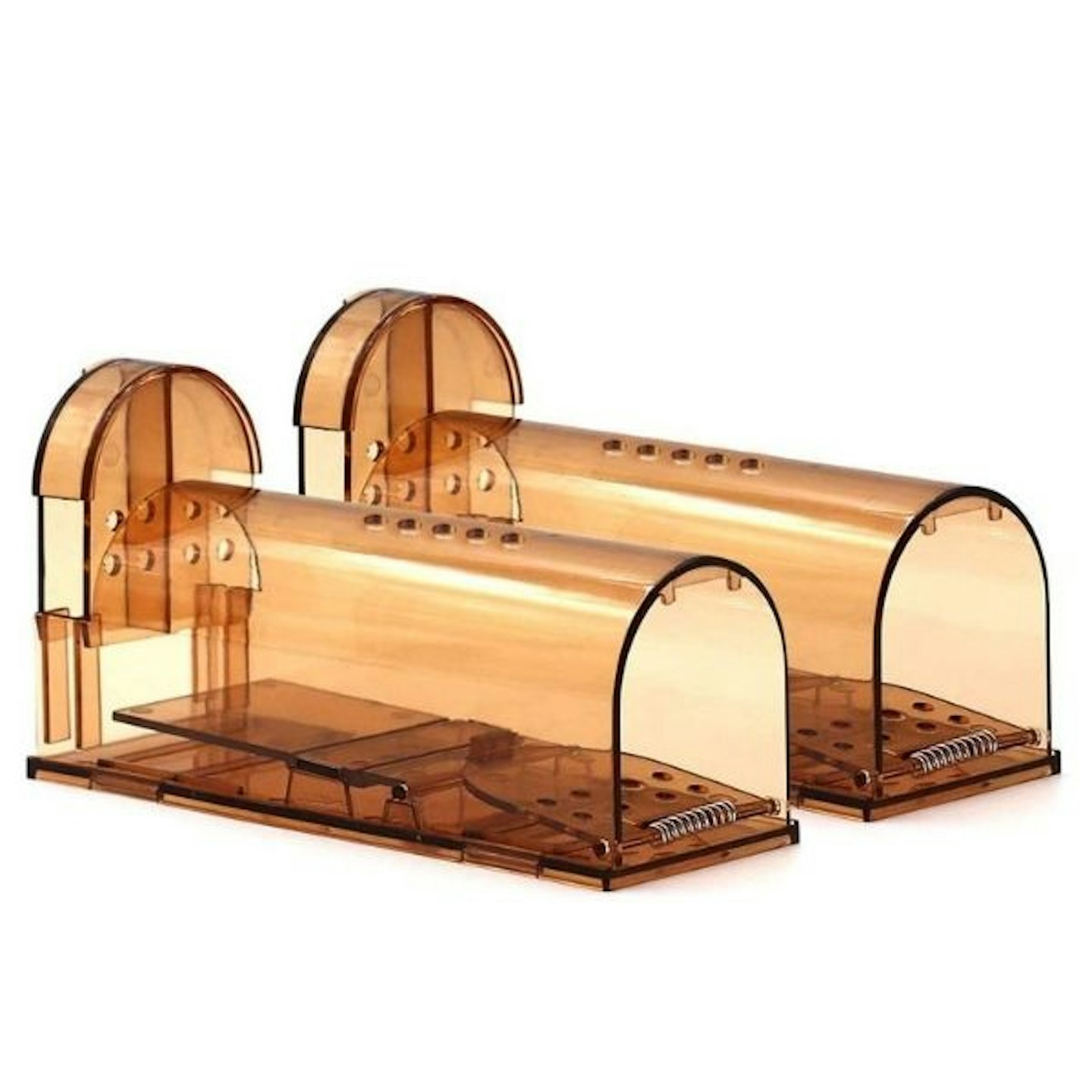 Motel Mouse/Amazon
Motel Mouse/AmazonThe Motel Mouse Humane Mouse Traps have extra air holes and lots of space for the mouse. This humane mousetrap has a highly sensitive pivot and is effective in trapping unwanted pests. Also, it comes with a free cleaning brush, and because it's made of plastic, it's a breeze to wash clean. Place the bait inside the trap, and wait for the mouse to enter. U-shaped slots on the door keep the mouse inside until you can remove it; then, wash it and use it again. The mouse has plenty of room to move around until you release it.
This four-pack of traps gets rave reviews when it comes to how simple and easy they are to use, release caught mice and clean and reset afterwards. Some reviewers felt they should be longer to make sure bigger mice could be completely caught safely.
Pros
- Has a sensitive pivot to catch mice
- Comes with a cleaning brush to make clean up after use easy
Cons
- Some reviews felt the traps could be bigger to safely catch bigger mice
Best mouse trap for safe handling
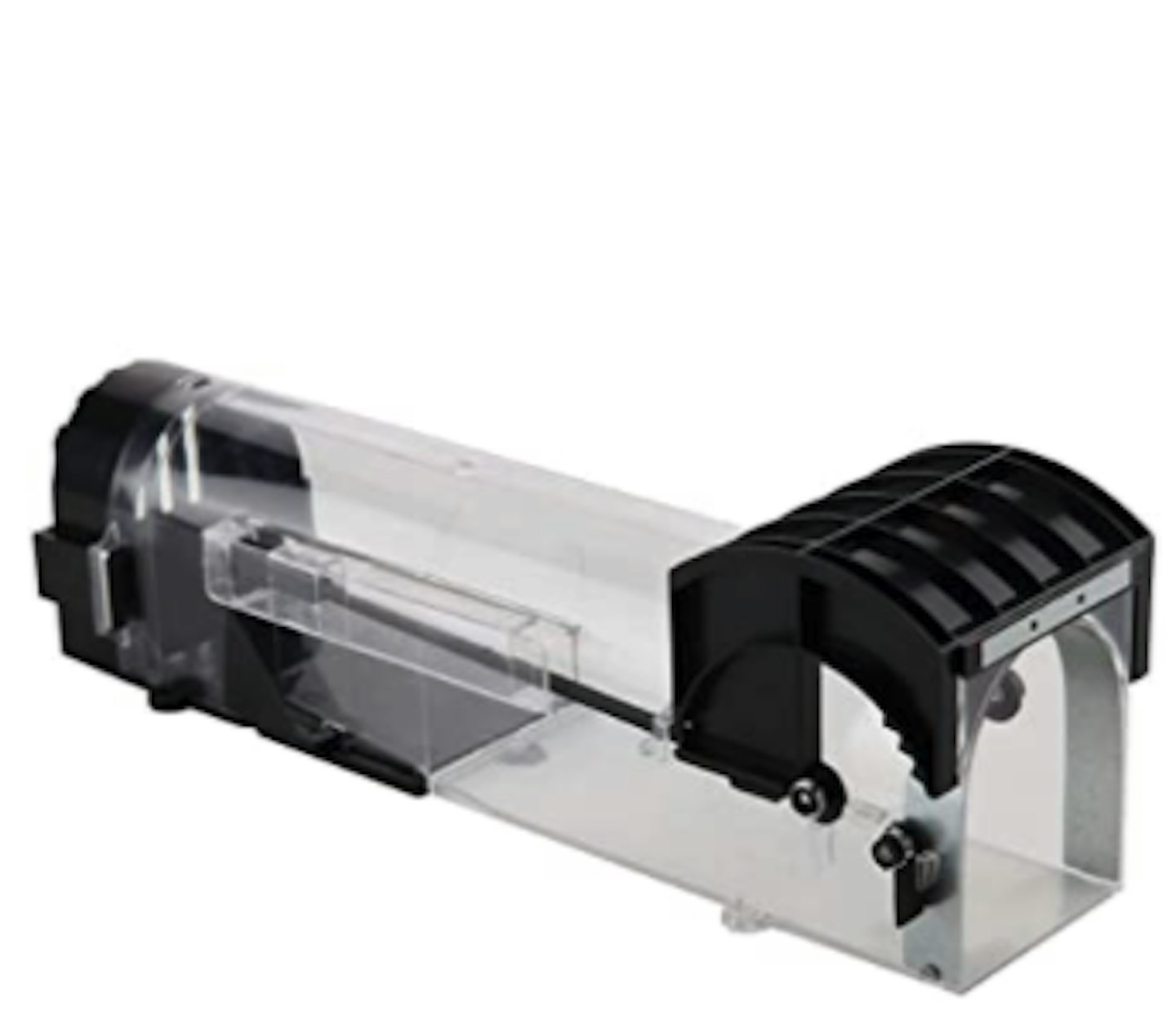 IIWEY/Amazon
IIWEY/AmazonWith over 8,500 reviews, the IIWEY Humane Mouse Trap is a popular option with Amazon customers. It's designed to mimic a real mouse hole and comes with an instruction manual to get the best use out of it. If the mouse is very small, this may not be as efficient, but you can tape a coin to the trap to help trigger it. Similar to previous models we've chosen, simply load the trap with bait and wait for the mouse to step inside and trigger the door closing to safely wait for you to release it. As the door closes from the outside, it shouldn't trap the tails of any mice that are lured inside.
This mouse trap ranks highly for how easy it is to use, how easy it is to remove mice from it and the value for money it offers. Customers also appreciated the sheerer design so they could see clearly when a mouse was caught. Some found the trap to be a bit flimsy, and as we've mentioned previously, this may not be as effective on smaller mice as they may not be heavy enough to activate the trigger.
Pros
- Sheer design so you can clearly see when you've caught something
- Door closes from outside so won't trap tails
Cons
- You may need to add a coin to weigh the trap in order to catch smaller mice as they may not be heavy enough to activate the trigger
Best for not seeing the mouse
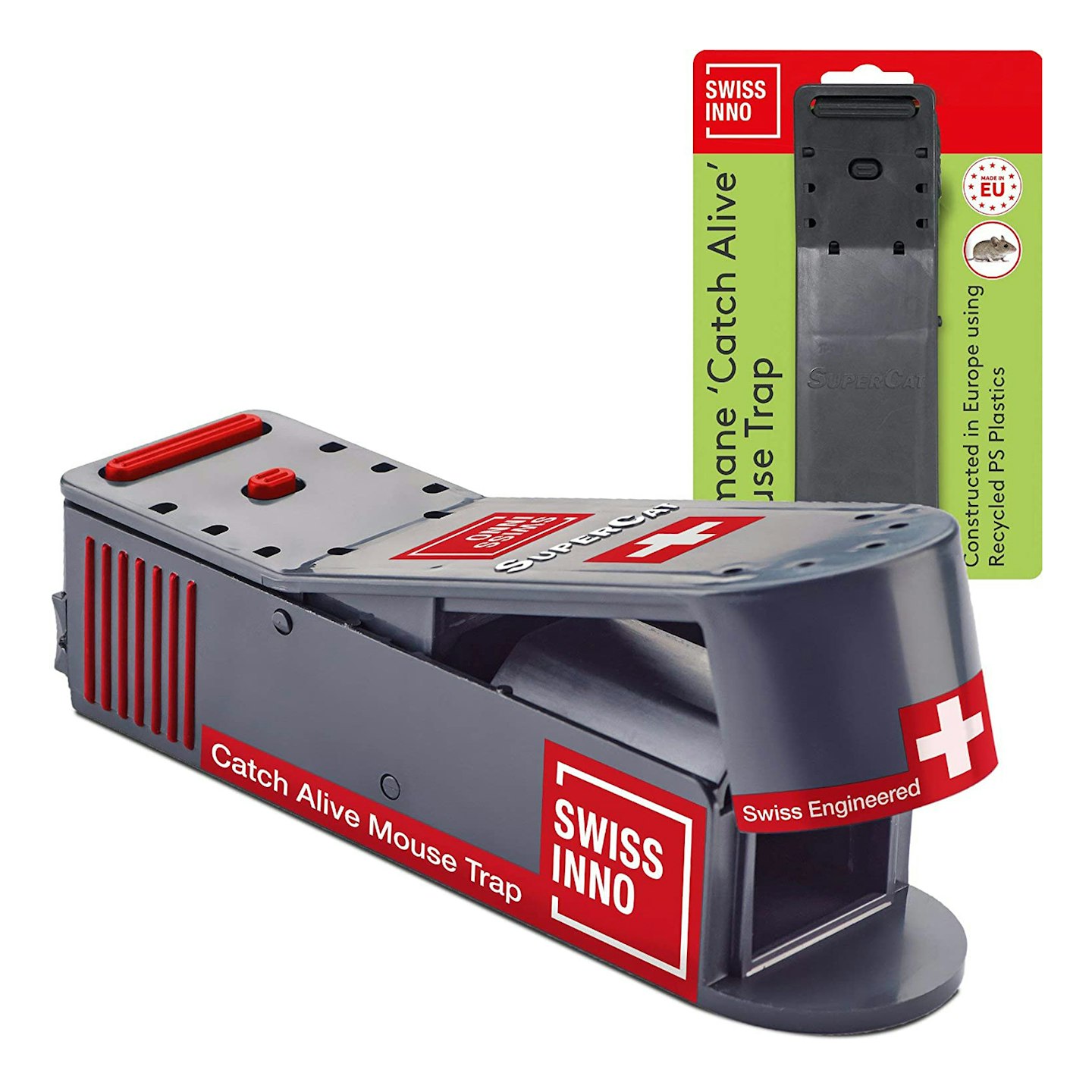 SWISSINNO/Amazon
SWISSINNO/AmazonMade from grey, robust, recycled plastic, this SWISSINNO SuperCat CATCH ALIVE Mouse Trap is not just humane but also shields you from seeing the mouse if you're not keen on looking at the pests. It's activated by a trigger, keeping the mouse safely inside, eating the bait that you've inserted. Release it into the wild without worrying about making eye contact.
Some customers have reported that if they use a heavy bait, that can sometimes set the trap off without the mouse being inside, but if the bait isn't big enough, it's not enough to lure the mouse in the first place, so that's something to bear in mind. The trap is also quite small, so while it's good for not looking too obvious, you may have issues with catching bigger mice inside it.
Pros
- Shields you from seeing the mouse if you'd rather not see it caught
- Robust recycled plastic
Cons
- Tricky to find the right size bait as too big can set the trap off, and too small isn't big enough to lure mice in
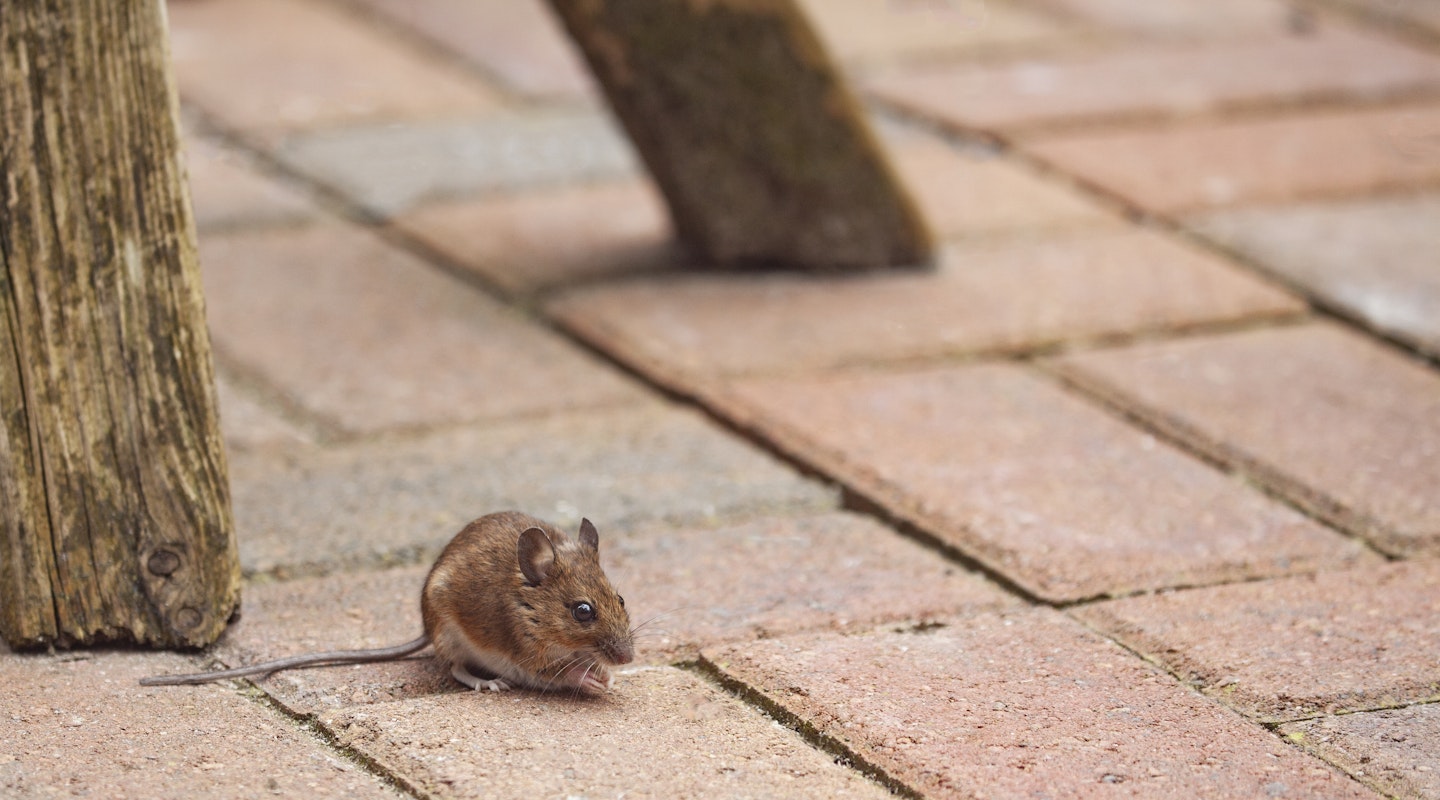
We put some of the most frequently asked questions about mice problems and humane mouse traps to Wayne Beck, owner of The Pest Master, a pest control company based in Derby:
How to catch a mouse FAQs
How do you know if you have a mouse?
Despite being nocturnal and therefore making them hard to spot during the day, mice tend to leave little clues for us. "You may find droppings, detect odours, find marks on walls (known as smearing) and gnaw marks in food", says Wayne. He continues to say, "you may possibly hear them scratching around in the walls and in the loft too". If you've seen or heard any of these signs, it's likely you have a mouse or two.
According to the Woodland Trust, there are many different types of mice in the UK that can find their way into your home including house mice, field mice, harvest mice and yellow-necked mice.
They've gotten smarter over time and have actually become very good at living with humans, so traditional methods like sprays or home remedies may no longer work, but it's always worth giving these a try, too. Read more on peta.org about living with mice.
Steps to get rid of mice quickly
When heading indoors, the biggest pull for mice will be food sources. Keep your kitchen and living areas clean of crumbs, keep food in airtight containers and ensure your rubbish bin is also sealed to reduce smells. Find out more about keeping your home clean and fresh here. Avoid leaving any garden debris such as paper or cardboard in piles near your home, as mice are also attracted to these. If you have bird feeders, mice may also be tempted to head your way, so try to keep them far from the house.
Then, look for any and all potential entry sites for a mouse. Mice can fit into VERY small holes, so use caulk or steel wool for larger holes to stop them. If in doubt or you're struggling to contain the problem, Wayne says it's time to speak to a professional for some advice. "Having an expert to look over the issue can help to identify entry points and give you advice on trying to stop the mice from coming back."
Wayne explains that in the majority of cases, mice can be stopped and contained quite easily but there may be some circumstances where it's not quite so straightforward. "If you living in a semi-detached house, you need to consider your neighbours as the mice may be in your house but could be gaining access via your neighbour's side." In these cases, a professional pest control expert will be able to advise on the best course of action.
What is a live catch trap?
A live catch rodent trap is usually a chamber or cage which is fitted with trigger-activated doors. Once the mouse has started tucking into a tasty treat, the door will shut without harming the mouse and will keep it safe for you to be able to release it. These humane mouse and rat traps are reusable, of course, and can be used time and time again to safely catch the mice.
Best mouse trap bait - what attracts mice to mouse traps?
Wondering what to put on a mouse trap? Despite eating seeds in their natural habitat, mice are attracted to high-calorie sweets and fatty foods, such as peanut butter, cheese, bread, chocolate and honey make the best bait for mouse traps. Marshmallows and beef jerky are also good options. While these foods typically would attract a mouse to a trap, Wayne says it's not always as simple as that. "Mice are all similar in characteristics and the biology is the same, however, not one cap fits all and while one food source or scent may attract one mouse to a trap, it might not have the same appeal to another. Sometimes, it's a case of trial and error to find something that lures them in."
Where should you put a mouse trap?
If you've identified a special route that your mouse likes to take, put the rodent trap in its path. If you're not sure where he's travelling, place it near the mouse droppings as it's likely he'll return here. The good thing about most of these mouse traps is that they're small and compact so can easily be tucked away in the corner of any room without looking too unattractive. Wayne explains that as mice have very poor eyesight, it's worth sticking traps around the edges of a room as mice often use their whiskers on either side of their cheeks to navigate around obstacles. That's why it's worth sticking them next to skirting boards to stop them in their tracks.
How to set up a mouse trap?
Whichever humane mouse trap you choose should come with a set of instructions to tell you how to set it up correctly. Ensure you read through any guidelines and check for any online tutorial videos before attempting to set it up.
What should you do after setting the trap?
“Check it regularly and make sure it has food and water inside”, says Wayne. He goes on to explain that he has “visited properties on many occasions where people have used the humane trap but have forgotten to check them. There has been little food and no water and it becomes debatable as to whether this becomes animal cruelty.”
Where should you release a mouse?
It's important to take your mouse as far away from your home as possible, otherwise, they will simply make their way back in. General advice suggests that three miles is an acceptable distance to deter it from heading straight back. The traps mentioned are no-touch traps, so there's no need to handle the mouse when you release it.
Will mice leave on their own?
"It is possible that they may leave on their own in the summer months," says Wayne." However, if you'd found a nice cosy home with plenty of food, would you leave? We don't think so. It would be very rare in the winter for mice to leave on their own, according to Wayne, as they are on the search for shelter as well as food in the colder months of the year.
Do mice know to avoid traps?
Mice have an incredible sense of smell, so while they may not know to avoid a mouse trap, they will know if a human has been near it - so they'll avoid the area. Wearing gloves when setting up a trap can help to keep your scent away from it.
Do mice come out during the day?
Mice are nocturnal, preferring to stay hidden during the day and search for food in the evenings and overnight. That's why you often hear scratching when you're trying to get to sleep. While they prefer to come out in the evenings, it's not unheard of for them to come out during the day according to Wayne.
Mouse traps that kill
There is a huge range of mouse traps that aim to kill, and as such are not humane, and there are lots of reasons why not to use them. These traps include:
-Traps using poison and bait
-Mouse glue traps
-Snap traps
-Electric traps
-Sticky traps
The dangers of using kill traps
There are plenty of reasons why a humane mouse trap is preferable and recommended, and not just because they're better for the mouse. We know that humane mouse traps keep the mouse safe and out of harm, and you can get rid of them out of your house without killing or hurting the mouse; inhumane traps will injure, hurt and harm the mouse, causing them pain and suffering - nothing an animal lover wants. Snap traps are one of the most popular types of mouse trap, but they do kill the mouse - normally instantly - and we prefer a trap that doesn't result in mouse death.
Other reasons for choosing a humane mouse trap include the possibility of a mouse getting injured by a trap, then disappearing behind your walls or under your floorboards, and dying in an inaccessible area - meaning that decomposing mouse body is going to smell. Sticky traps are troublesome because again they trap the mouse and leave them stuck - potentially for days if you don't check it regularly, resulting in a slow death. They can only be used once, shouldn't be used outside, and should definitely not be used around children.
Children - a reason in themselves to choose a humane mouse trap. Not only does a humane option teach children about looking after animals in the right way, but they're also much safer. Curious children will be fascinated and you don't really want them fiddling around with mouse traps, or the half-dead mouse stuck in one. There are also disposable mouse traps, which aren't recyclable or eco-friendly, so we don't recommend these either.
This article contains expert advice from Wayne Beck, owner of pest control company, The Pest Master. He is a fully qualified, level two RSPH and has passed other specialist courses on bedbugs, wasps and many other pests.
Jade Moscrop is the Commercial Content Editor for Yours, specialising in lifestyle topics. When she’s not writing about chic homeware, pet products and beauty buys, she can usually be found wandering the countryside, buying houseplants or listening to female-fronted rock bands.
